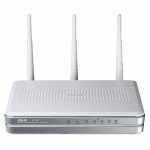In early February, Google disclosed plans for an experimental broadband network capable of speeds up to 100Mbps. That’s around 20 times your average broadband connection, and while details of this ultra-fast internet remain unclear, Google’s visibility in the market has made these plans extremely public.
Public, in fact, to the point of entire cities renaming themselves after the prolific search engine in order to attract its attention and become one of the test sites for the new high speed service. Just look at Topeka, Kansas, known for the rest of March as Google, Kansas.
Google hasn’t said much about the tech behind the scenes, although it’s likely based on optimized fiber optics and servers able to carry bigger bandwidths. In a similar vein, Cisco, one of the world’s largest providers of networking hardware, has also unveiled concepts for super speed internet early this month, even if no major principalities have re-christened themselves for the occasion as of this writing.
Coinciding with all this is the current White House administration’s grand vision for a national broadband plan for the U.S, an initiative seeking to attain 100% coverage of American households and businesses in terms of high speed internet. The plan not only calls for coverage, it also suggests broadband needs to work faster and better – with far greater reliability than currently demonstrated by many service providers around the world, who make speed and latency claims they cannot live up to.
Why is this suddenly such a hot topic again? After all, broadband internet has been with us since the late 90s, and this kind of conversation was more of a common occurrence back then.
The reality is that while computing has evolved greatly in the previous decade, internet speeds continue to lag behind this forward push and marketing persists as an issue, with consumers not sure how to gauge performance. Many providers can quote high theoretical speeds, but in practice those only apply from the consumer’s PC to the main server down the street. Real world speeds are a problem, and bottlenecks are starting to place a choke hold on the internet. Thus, demand from consumers, government and business for faster and better connectivity has come to a head, since we now firmly depend on an efficient internet to do much of everything. The economy itself is beginning to feel the constriction thanks to underperforming broadband infrastructures.
Helping things along
We’re certain given enough time and trans-oceanic fiber optics, the global broadband system will improve – although it’s quite possible it’ll continue to fall short of applications for some time to come. After all, it’s physically easier to develop cutting edge software than it is to lay thousands of kilometers of cabling deep under water.
While we’re waiting for this vision of great connectivity to materialize, several solutions exist to maximize internet speeds via hardware tools already on the market.
For example, the new ASUS Republic of Gamers Crosshair IV Formula motherboard has a feature called GameFirst. Acknowledging the strain put on global broadband, GameFirst aims to re-structure your internet connection around online gaming, an application requiring low latency and high speeds. The two main things GameFirst does are designate the game being played as a priority, so that the network card reserves bandwidth in real time. The second is minimize connection-hungry background processes, so that your fave online pastime doesn’t have to share precious resources. Using GameFirst on motherboards helps alleviate some of the issues afflicting online gamers – particularly high pings when playing on distant servers. This is especially useful since the internet remains a primarily American-European phenomenon, while most users do not reside in those parts of the world.
Another way of getting around extant limitations are fast routers such as the ASUS RT-N16. This product incorporates several connection-boosting features to note, first being the ability to handle 300,000 sessions at once, more than double the budget routers often offered by service providers. It also includes EZQoS easy bandwidth management to either manually prioritize connections or do so automatically. And it’s a breeze to set up thanks to the EZ UI software, making RT-N16 a friendly router. That in itself is a major feat.
At any rate (pun most assuredly intended), we still have a ways to go. I think it was my colleague here Hector who recently spoke of the way science fiction kept promising us hover cars, and we’re getting to the point of truly instantaneous broadband joining that elusive club. Fortunately, as we’ve seen there are coping mechanisms, so hopefully it won’t be too frustrating a wait until new tech finally downloads.





Lee